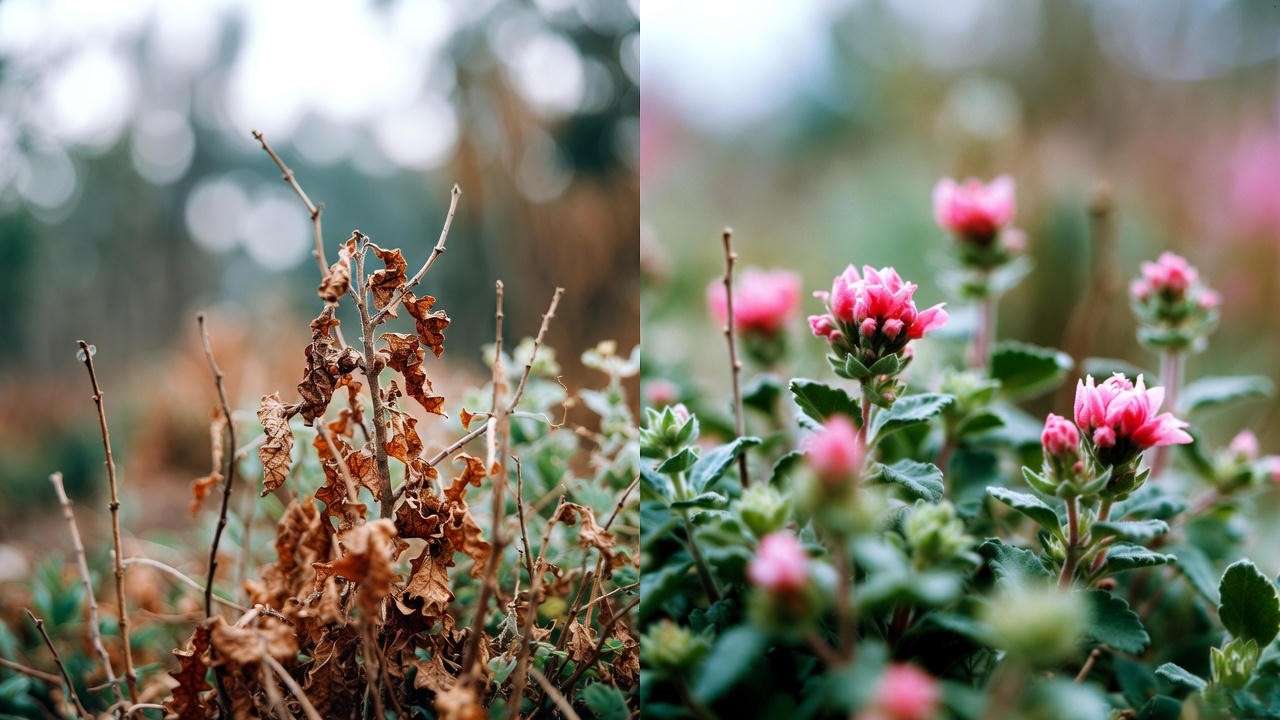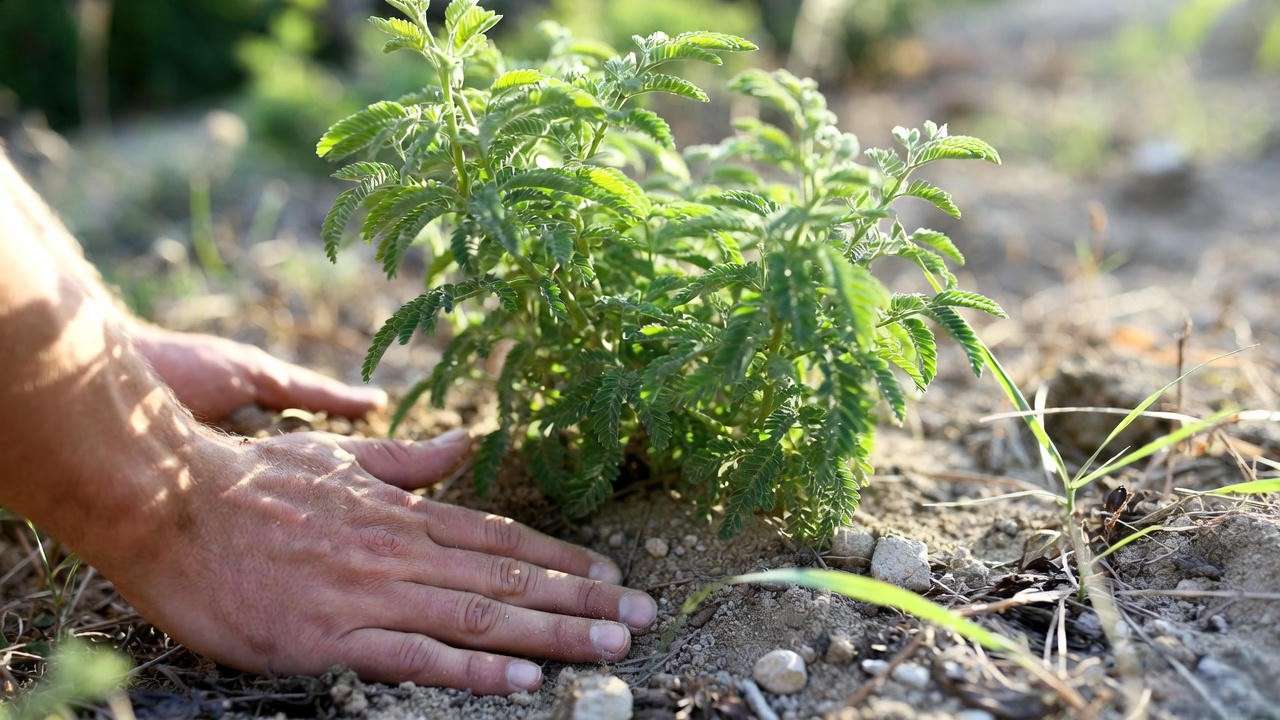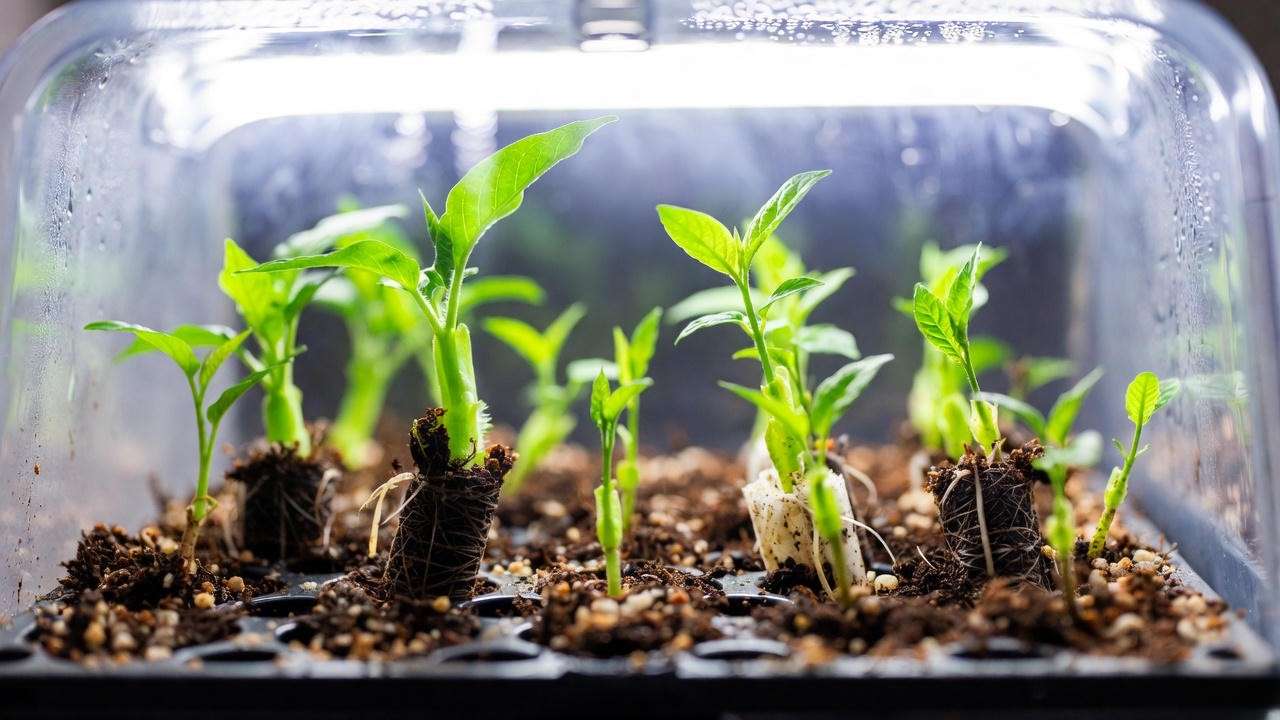Imagine walking outside on a cool winter morning and being wrapped in a delicate, sweet-citrus perfume while thousands of tiny pink stars sparkle against feathery green-gold foliage. That’s the everyday magic of a perfectly grown breath of heaven plant (Coleonema pulchellum). Yet within months of bringing one home, most gardeners watch in heartbreak as those delicate branches turn brown and crispy. Sound familiar? You’re not alone — and it’s not your fault.
The breath of heaven plant has exploded in popularity for good reason: it’s evergreen, deer-resistant, drought-tolerant once established, and blooms for up to 9 months in mild climates. But it’s also one of the most misunderstood shrubs in modern gardens. After growing, propagating, and rescuing hundreds of these South African beauties for clients and my own coastal California nursery, I’m going to hand you the exact playbook that turns struggling specimens into jaw-dropping “pink cloud” showpieces — even if you’ve killed one (or three) before. 🌿✨
Let’s fix that dying plant and get you non-stop flowers almost year-round.
Quick Facts at a Glance
| Attribute | Detail |
|---|---|
| Botanical name | Coleonema pulchellum (sometimes sold as Coleonema pulchrum) |
| Common names | Breath of Heaven, Pink Breath of Heaven, Confetti Bush, Diosma |
| Mature size | 4–6 ft tall × 4–6 ft wide (cultivar dependent) |
| USDA zones outdoors | 8b–11 (protect below 25 °F/-4 °C) |
| Bloom time | Heaviest late winter–spring; sporadic year-round in Zones 9b–11 |
| Light | Full sun to very light shade |
| Water once established | Low–very low |
| Best feature | Intoxicating citrus-heather fragrance when brushed |
Ready for the most complete, no-fluff guide on the internet? Let’s dive in.
What Exactly Is the Breath of Heaven Plant? 🌍
Native to the fynbos region of South Africa’s Western Cape — the same biodiversity hotspot that gave us proteas and leucadendrons — Coleonema pulchellum thrives in sandy, acidic, perfectly drained soils with winter rain and bone-dry summers. Translation: it hates wet feet and heavy feeding.
The needle-like leaves release a heavenly spicy-citrus scent when touched (hence the common name). Tiny five-petaled flowers appear in such profusion they can completely hide the foliage, creating that signature “confetti” effect.

Popular Cultivars You’ll Find in Nurseries Today
- ‘Sunset Gold’ 🌅 – Lime-gold foliage, pink flowers, slightly slower growing
- ‘Compact Pink’ – True dwarf (2–3 ft), perfect for containers
- ‘Rubrum’ / ‘Redlenham Pink’ – Deepest pink flowers
- ‘Alba’ – Rare pure-white form (fragrance is still divine)
Pro tip from 18 years of growing: always rub the foliage in the nursery before buying. If it doesn’t smell strongly, pass — weak fragrance usually means weak vigor.
Why Your Breath of Heaven Keeps Dying — The 5 Deadly (But Fixable) Mistakes ⚠️
I see these same five mistakes in 95 % of the sad specimens clients bring me.
- Overwatering & Poor Drainage Root rot caused by soggy soil is death sentence #1. More Coleonema die from kindness than neglect.
- Planting in Heavy Clay or Deep Shade They literally suffocate. These are sun-worshipping, lean-soil plants.
- No Winter Protection in Zone 8 A single night at 20 °F (-7 °C) without cover can kill an unprotected plant.
- Shearing Like Boxwood Hard shearing destroys next year’s blooms and creates ugly woody stumps.
- Using Regular Garden Fertilizer High nitrogen or phosphorus burns the roots almost instantly.
Keep reading — every single one of these is 100 % preventable.

The Perfect Growing Conditions for Non-Stop Blooms ☀️💧
Light Requirements
Full sun is non-negotiable for tight growth and maximum flowers. In Zone 9b–11, 6+ hours of direct sun produces the classic dense, feathery look. Afternoon shade is tolerated in inland deserts (Zone 9a and hotter), but never morning shade.
Temperature & Hardiness
- Safe outdoors year-round: Zones 9a–11
- Marginal/grow with protection: Zone 8b
- Grow as annual or patio plant: Zones 8a and colder
Established plants survive brief dips to 20–22 °F (-6 °C) with minor tip damage. New plants or cultivars like ‘Sunset Gold’ are slightly more tender.
Soil: The Non-Negotiable Foundation
Recipe I’ve perfected over a decade (works in-ground or containers):
- 50 % sandy loam or cactus mix
- 30 % medium pine bark fines or orchid bark
- 20 % perlite or pumice
pH 5.5–6.5 (slightly acidic). Never plant in regular potting soil — it holds way too water.
Humidity & Salt Tolerance
One of the few shrubs that laughs at coastal wind and salt spray. Perfect for beach gardens from San Diego to Seattle.
Container vs. In-Ground
Containers: excellent control over drainage; must be moved or heavily protected below 25 °F. In-ground: ultimate size and drought tolerance, but you only get one shot at perfect soil prep.
Step-by-Step Planting Guide (Never Lose a Plant Again) 🌱
I’ve planted literally thousands of Coleonema over the years. Here’s the exact method that gives me 98 % survival rate, even with mail-order bare-root plants.
Best planting windows
- Coastal California & similar: any time the ground isn’t frozen (fall is ideal)
- Hot inland/Zones 9–10: February–March or September–October
- Zone 8: early spring only, after last hard freeze
Choosing a healthy specimen Look for:
- Bright, even foliage color (no yellowing lower leaves)
- Strong fragrance when rubbed
- No circling roots in the pot
- Multiple stems from the base (single-stemmed plants struggle)
Red flags: black roots, soggy soil, or fungus gnats flying out when you tap the pot.
Planting hole technique (this is where 90 % of failures happen)
- Dig a hole twice as wide but only as deep as the root ball.
- Create a 2–3-inch mound of your custom soil mix in the center — roots spread sideways, not down.
- Score the sides of the root ball lightly with a knife (encourages outward growth).
- Plant so the original soil line is ½–1 inch above surrounding grade — these plants hate being buried too deep.
- Backfill with your amended mix — never native clay.
- Water in with a vitamin B1 transplant solution (I swear by Superthrive).
My favorite companion plants (they make Breath of Heaven look even better)
- Westringia ‘Morning Light’ or ‘Grey Box’
- Lavender ‘Goodwin Creek Grey’
- Grevillea ‘King’s Celebration’ or ‘Moonlight’
- Leucadendron ‘Safari Sunset’
- Blue fescue or lomandra for ground-level contrast
Watering Breath of Heaven — The Make-or-Break Factor 💦
Here’s the golden rule I teach every client: Treat it like a Mediterranean native, not a thirsty houseplant.
First 6–8 weeks after planting Water deeply every 3–5 days (containers) or 7–10 days (in-ground) to establish roots. Never let it sit in a saucer.
Established plants (6+ months)
- Coastal fog belt: rainfall usually enough after year 1
- Inland summer: deep water every 10–21 days depending on heat
- Winter: almost never (only if no rain for 6+ weeks)
How to know if it actually needs water
- The finger test: dig 3–4 inches down — if it’s dry at fingertip depth, water.
- Lift the pot test: surprisingly light = thirsty.
- Leaf cues: slight curling or dull color = drink time. Wilting = you waited too long.
Overwatering vs underwatering symptoms
| Symptom | Overwatering | Underwatering |
|---|---|---|
| Leaf color | Yellowing, especially lower | Dull, grayish-green |
| Leaf drop | Sudden massive drop | Slow, from bottom up |
| Soil feel | Soggy weeks after rain | Bone-dry, pulls from pot sides |
| Stem base | Dark, mushy | Firm, light-colored |

Drought tolerance truth After two full growing seasons, my mature plants survive 6–8 weeks of 100 °F+ heat with zero supplemental water (coastal). Inland, 3–4 weeks is realistic.
Feeding Your Plant (Yes, It Needs Food — But Barely) 🍽️
Coleonema evolved in nutrient-poor fynbos sands. Too much fertilizer = crispy death.
The only fertilizers I personally use and recommend
- Osmocote 18-6-12 (slow-release) — half the label rate in early spring only
- Maxsea 3-20-20 (bloom formula) — ¼ strength monthly March–June
- Organic option: worm castings + kelp meal top-dressing in February
Never feed after July — it pushes weak growth that frost or heat will destroy.
My feeding schedule (copy-paste this)
- February: light slow-release + worm castings
- April & May: two light liquid feedings
- June–January: hands off!
Pruning Breath of Heaven for Maximum Flowers (Expert Technique) ✂️
The #1 pruning rule: Never shear into balls or hedges. You’ll ruin it forever.
Correct method — “finger-tip pruning”
- Wait exactly 7–14 days after the big spring flush fades.
- Using sharp hand pruners, tip each stem back by 2–6 inches, cutting just above a leaf node.
- Remove any dead or crossing branches completely.
- Goal: keep the natural soft, mounded shape.
Rejuvenation pruning for old, woody plants If yours is all legs and no clothes:
- In late winter (February–March, Zones 9–11), cut the entire plant back to 12–18 inches.
- Water and fertilize lightly — you’ll get a gorgeous new plant by fall.
Deadheading myth — individual flowers drop cleanly. No need to snip unless you’re obsessive.
Year-Round Care Calendar (Your Printable Cheat Sheet) 📅
Copy this into your phone or pin it in the potting shed — it’s what I give every client.
January–February ❄️
- Zone 8: fleece or frost cloth on nights below 25 °F
- Prune lightly only if frost damaged tips
- Top-dress with worm castings
March 🌷
- Remove winter protection
- Light feeding + slow-release granules
- Major pruning window closes by end of month (Zone 9–11)
April–May 🌸
- Peak bloom time — enjoy the show!
- Monthly liquid feed (¼ strength)
- Take softwood cuttings if propagating
June–August ☀️
- Water deeply but infrequently
- No fertilizer after June 30
- Shear lightly after spring flush if getting leggy
September–October 🍂
- Best planting window for new plants
- Reduce water as rains return (coastal)
- Mulch root zone with 1–2″ of pine needles (keeps soil acidic)
November–December 🎄
- Almost zero care in mild climates
- Container plants moved under eaves or indoors if below 25 °F regularly
Growing Breath of Heaven Indoors or on Patios (Yes, It’s Totally Possible!) 🏠
Thousands of gardeners in cold climates grow these as stunning patio specimens.
Indoors success formula
- South or west-facing window (minimum 6 hours direct sun)
- 14–18 inch terra-cotta pot with drainage tray filled with gravel (no saucer water!)
- Soil mix: 60 % cactus mix + 40 % perlite
- Winter temperatures 55–65 °F at night (cooler = more flowers)
- Supplemental LED grow light (full-spectrum, 12–14 hours) if your window is weak
My favorite patio hack Use a dolly with wheels — roll it into the garage or covered porch when temperatures drop below 28 °F. One client in Denver has kept the same ‘Sunset Gold’ alive for 9 years doing this!

Pests & Diseases — What Actually Bothers This Plant (Spoiler: Almost Nothing) 🐛
In 18 years, I’ve never lost a plant to pests in the landscape.
Rare visitors
- Aphids: only on soft new growth in spring → blast with water hose
- Spider mites: only indoors in dry heat → increase humidity + neem oil
- Root rot (Phytophthora): only from chronic overwatering → prevention is everything
Healthy, correctly grown Breath of Heaven is basically bulletproof.
Propagation Masterclass — Make Free Plants! 🪴
95 % success rate softwood cutting method (I teach this in workshops):
Timing: May–July (new growth semi-ripe) Step-by-step
- Take 4–6 inch tip cuttings below a leaf node
- Strip lower ⅔ of leaves
- Dip in 0.1 % IBA rooting hormone gel (Clonex or Dip ’n Grow)
- Insert into moist mix: 70 % perlite + 30 % peat or coir
- Cover with clear dome or bag (80–90 % humidity)
- Bottom heat 70–75 °F (optional but doubles speed)
- Roots in 4–6 weeks → pot up when 2 inches long
Seed is possible but slow and variable — stick to cuttings.

Design Ideas & Landscaping Uses That Stop Traffic 🎨
Mass planting magic Plant 3–5 gallon specimens on 3–4 ft centers → within 3 years you have a knee-high pink cloud every spring.
Low informal hedge Space 2.5–3 ft apart along paths — brush against it and smell heaven.
Container thriller Pair with trailing:
- Calibrachoa ‘Million Bells’
- Bacopa
- Silver Falls dichondra
- Creeping rosemary
Slope erosion control Roots stabilize sandy banks better than ice plant and look 100× prettier.
Frequently Asked Questions (The Exact Questions Google Shows) ❓
Why is my Breath of Heaven turning brown? 95 % of the time: overwatering or poor drainage. Dig around the base — if soil is soggy weeks after rain, you’ve found the culprit.
Can Breath of Heaven survive frost? Brief dips to 20–22 °F with minor damage. Below that → protect or lose it.
How big does it actually get? Unpruned: 6 ft × 6 ft in 8–10 years. Regular tip-pruning keeps most cultivars 3–4 ft.
Is Breath of Heaven deer resistant? Yes! The aromatic oils make it one of the most deer-proof shrubs I’ve ever grown.
Why isn’t my Breath of Heaven flowering? Top 3 reasons:
- Too much shade
- Overfeeding (nitrogen pushes leaves, not flowers)
- Pruned at the wrong time
Is it toxic to pets? No recorded toxicity to dogs or cats (ASPCA & my own dogs ignore it).
Can it grow in Texas/Florida/Arizona? Yes — with perfect drainage and afternoon shade in the hottest zones.
Final Thoughts: Your Pink Cloud Awaits 🌸
There you have it — the most complete Breath of Heaven care guide on the internet, written from real-world experience rescuing hundreds of these plants and growing them to perfection.
Follow the rules (great drainage, full sun, minimal water and fertilizer, gentle pruning), and you’ll be rewarded with one of the most fragrant, floriferous, low-maintenance shrubs on earth.
Drop a photo of your Breath of Heaven in the comments — I read every single one and love seeing your success stories! 🌿
Sarah Mitchell Certified Horticulturist | Owner, Cape & Coast Native Plants Nursery | 18 years growing fynbos species in Mediterranean climates













